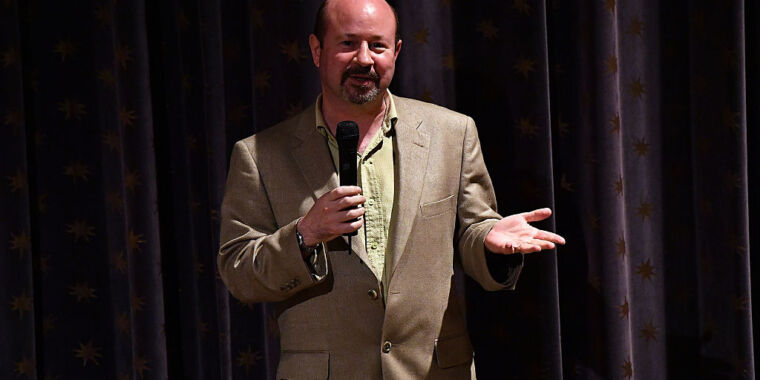More than 1,000 known child sexual abuse materials (CSAM) were found in a large open dataset—known as LAION-5B—that was used to train popular text-to-image generators such as Stable Diffusion, Stanford Internet Observatory (SIO) researcher David Thiel revealed on Wednesday.
SIO’s report seems to confirm rumors swirling on the Internet since 2022 that LAION-5B included illegal images, Bloomberg reported. In an email to Ars, Thiel warned that “the inclusion of child abuse material in AI model training data teaches tools to associate children in illicit sexual activity and uses known child abuse images to generate new, potentially realistic child abuse content.”
Thiel began his research in September after discovering in June that AI image generators were being used to create thousands of fake but realistic AI child sex images rapidly spreading on the dark web. His goal was to find out what role CSAM may play in the training process of AI models powering the image generators spouting this illicit content.
“Our new investigation reveals that these models are trained directly on CSAM present in a public dataset of billions of images, known as LAION-5B,” Thiel’s report said. “The dataset included known CSAM scraped from a wide array of sources, including mainstream social media websites”—like Reddit, X, WordPress, and Blogspot—as well as “popular adult video sites”—like XHamster and XVideos.
Shortly after Thiel’s report was published, a spokesperson for LAION, the Germany-based nonprofit that produced the dataset, told Bloomberg that LAION “was temporarily removing LAION datasets from the Internet” due to LAION’s “zero tolerance policy” for illegal content. The datasets will be republished once LAION ensures “they are safe,” the spokesperson said. A spokesperson for Hugging Face, which hosts a link to a LAION dataset that’s currently unavailable, confirmed to Ars that the dataset is now unavailable to the public after being switched to private by the uploader.
Removing the datasets now doesn’t fix any lingering issues with previously downloaded datasets or previously trained models, though, like Stable Diffusion 1.5. Thiel’s report said that Stability AI’s subsequent versions of Stable Diffusion—2.0 and 2.1—filtered out some or most of the content deemed “unsafe,” “making it difficult to generate explicit content.” But because users were dissatisfied by these later, more filtered versions, Stable Diffusion 1.5 remains “the most popular model for generating explicit imagery,” Thiel’s report said.
A spokesperson for Stability AI told Ars that Stability AI is “committed to preventing the misuse of AI and prohibit the use of our image models and services for unlawful activity, including attempts to edit or create CSAM.” The spokesperson pointed out that SIO’s report “focuses on the LAION-5B dataset as a whole,” whereas “Stability AI models were trained on a filtered subset of that dataset” and were “subsequently fine-tuned” to “mitigate residual behaviors.” The implication seems to be that Stability AI’s filtered dataset is not as problematic as the larger dataset.
Stability AI’s spokesperson also noted that Stable Diffusion 1.5 “was released by Runway ML, not Stability AI.” There seems to be some confusion on that point, though, as a Runway ML spokesperson told Ars that Stable Diffusion “was released in collaboration with Stability AI.”
A demo of Stable Diffusion 1.5 noted that the model was “supported by Stability AI” but released by CompVis and Runway. While a YCombinator thread linking to a blog—titled “Why we chose not to release Stable Diffusion 1.5 as quickly”—from Stability AI’s former chief information officer, Daniel Jeffries, may have provided some clarity on this, it has since been deleted.
Runway ML’s spokesperson declined to comment on any updates being considered for Stable Diffusion 1.5 but linked Ars to a Stability AI blog from August 2022 that said, “Stability AI co-released Stable Diffusion alongside talented researchers from” Runway ML.
Stability AI’s spokesperson said that Stability AI does not host Stable Diffusion 1.5 but has taken other steps to reduce harmful outputs. Those include only hosting “versions of Stable Diffusion that include filters” that “remove unsafe content” and “prevent the model from generating unsafe content.”
“Additionally, we have implemented filters to intercept unsafe prompts or unsafe outputs when users interact with models on our platform,” Stability AI’s spokesperson said. “We have also invested in content labelling features to help identify images generated on our platform. These layers of mitigation make it harder for bad actors to misuse AI.”
Beyond verifying 1,008 instances of CSAM in the LAION-5B dataset, SIO found 3,226 instances of suspected CSAM in the LAION dataset. Thiel’s report warned that both figures are “inherently a significant undercount” due to researchers’ limited ability to detect and flag all the CSAM in the datasets. His report also predicted that “the repercussions of Stable Diffusion 1.5’s training process will be with us for some time to come.”
“The most obvious solution is for the bulk of those in possession of LAION‐5B‐derived training sets to delete them or work with intermediaries to clean the material,” SIO’s report said. “Models based on Stable Diffusion 1.5 that have not had safety measures applied to them should be deprecated and distribution ceased where feasible.”




